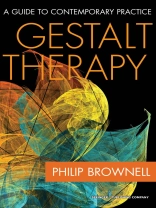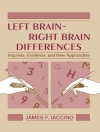This book is a practical, professional reference on the practice of Gestalt Therapy (GT) by Philip Brownell, a leading practitioner and scholar in the field. The book covers the philosophical basics of GT and contrasts it with various types of psychotherapeutic approaches. The book also provides guidelines on how to apply GT principles to therapeutic practice with clients. Lastly, the authors cover training on a post-graduate level, certification, and continuing education issues relevant for the practicing therapist.
Key Features:
- Explains Martin Buber’s use of ‘dialogue’ in gestalt therapy and how to practice in a dialogical manner
- Compares and contrasts the features of a gestalt system of diagnosis with Diagnostic and Statistical Manual of Mental Disorders (DSM)
- Provides GT treatment planning and case management practices
Daftar Isi
Part One: General Considerations
Chapter One: What Is Psychotherapy?
Chapter Two: What Is Gestalt Therapy?
Part Two: How To Do Gestalt Therapy
Chapter Three: Dealing with Personal Experience
Chapter Four: Working the Therapeutic Relationship
Chapter Five: Using the Context of Life
Chapter Six: Moving To Action
Chapter Seven: Practicing a Unified Approach
Part Three: Specific Clinical Issues
Chapter Eight: Assessment in Gestalt Therapy
Chapter Nine: Treatment Planning in Gestalt Therapy
Chapter Ten: Case Management from a Gestalt Perspective
Part Four: Training and Certification
Chapter Eleven: Training in Gestalt Therapy
Chapter Twelve: Certification
Chapter Thirteen: Continuing Education in Gestalt Therapy
Chapter Fourteen: Professional Affiliations in Gestalt Communities
Tentang Penulis
Philip Brownell, MDiv, Psy D, is a licensed Clinical Psychologist in North Carolina and Oregon and a Registered Psychologist in Bermuda. He is an ordained clergyman and writes a weekly column on integrative issues for The Royal Gazette, Bermuda’s largest daily newspaper. He is currently a staff psychologist at Benedict Associates, Ltd., where he offers a broad range of assessment and counseling services to child, adolescent, and adult populations, including individual, couple, family, and group therapy.












